One bright, windy morning on an island off the coast of Maine I finally decided I no longer wanted to cruise with my iso-butane backpacking stove. A cold front had passed the night before and the wind was coldly streaming in from the northwest. I was attempting to boil water for soft-boiled eggs, and the roaring flame sputtered inefficiently while I contorted my body around the stove to block the wind. Suddenly, while awkwardly repositioning myself, I knocked the top-heavy assembly over onto the rocks.
I wanted a stove that would be better suited to small-boat camp-cruising by providing a wide stable base, be more windproof, and yet remain neatly stowable where space was at a premium. I also wanted to do more cooking than just boiling water. After much research, the stove that met these requirements was the venerable Trangia 25-8.
Trangia, a family-owned Swedish company, has been making camping stoves since 1925. Their stoves and cooking hardware are modular, with most of the components nesting within each other for compact storage. Pots, pans, and kettles allow all sorts of camp cooking, from boiling water to pan-searing scallops or making chili. The Trangia 25-8 works with multiple burners and fuel types, and the wide base and windscreen make for a solid cooking platform that resists all but the most howling winds. A wide variety of other accessories expand the cooking options even more.
 Photographs by the author
Photographs by the authorThe Trangia system is designed to nest the stove parts and cooking pots in a compact package.
The Trangia comes in two sizes, the 27 which is smaller and suited to one person, or the 25, which is larger and better suited to two. The 25 is about 8-1/2″ wide and 4-1/2” tall when stowed. It comes with a frying pan, a 0.9-liter kettle, a 1.5-liter pot, and a 1.75-liter pot. The windscreen base assembly and the pots can be chosen in different materials depending on what the discerning chef requires. I chose the Storm Cooker 25-8 UL/HA for the ultralight aluminum windscreen and hard-anodized aluminum cookware. Plain aluminum, stainless steel, and non-stick coated are also available. All the items are also available separately so mixing and matching of different materials is possible.
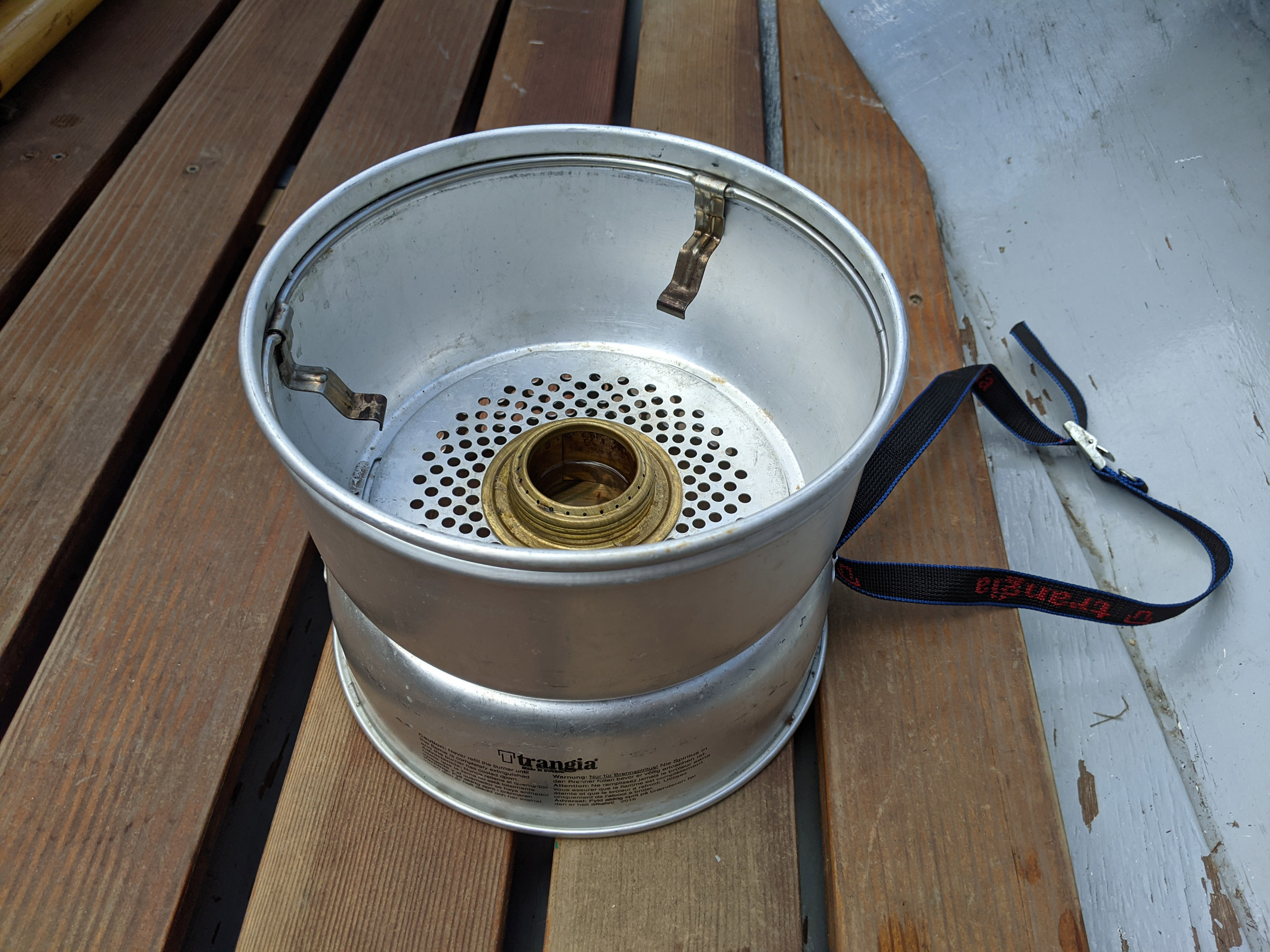
The stove was designed in the 1950s around an alcohol burner. The back side of the base is perforated with holes to provide airflow to the burner while the shield protects the flames and retains heat
The wide range of fuel options is especially conducive to camp-cruising. The standard is the brass alcohol burner, which is compact and completely silent. Making coffee during a peaceful early dawn on the beach is a joy with this quiet burner and a welcome departure from other more powerful burners that disrupt tranquility. A simmer ring, with a pivoting metal plate, attaches to the top of the burner and allows flame regulation—perfect for cooking pancakes, which are easy to scorch on other stoves.
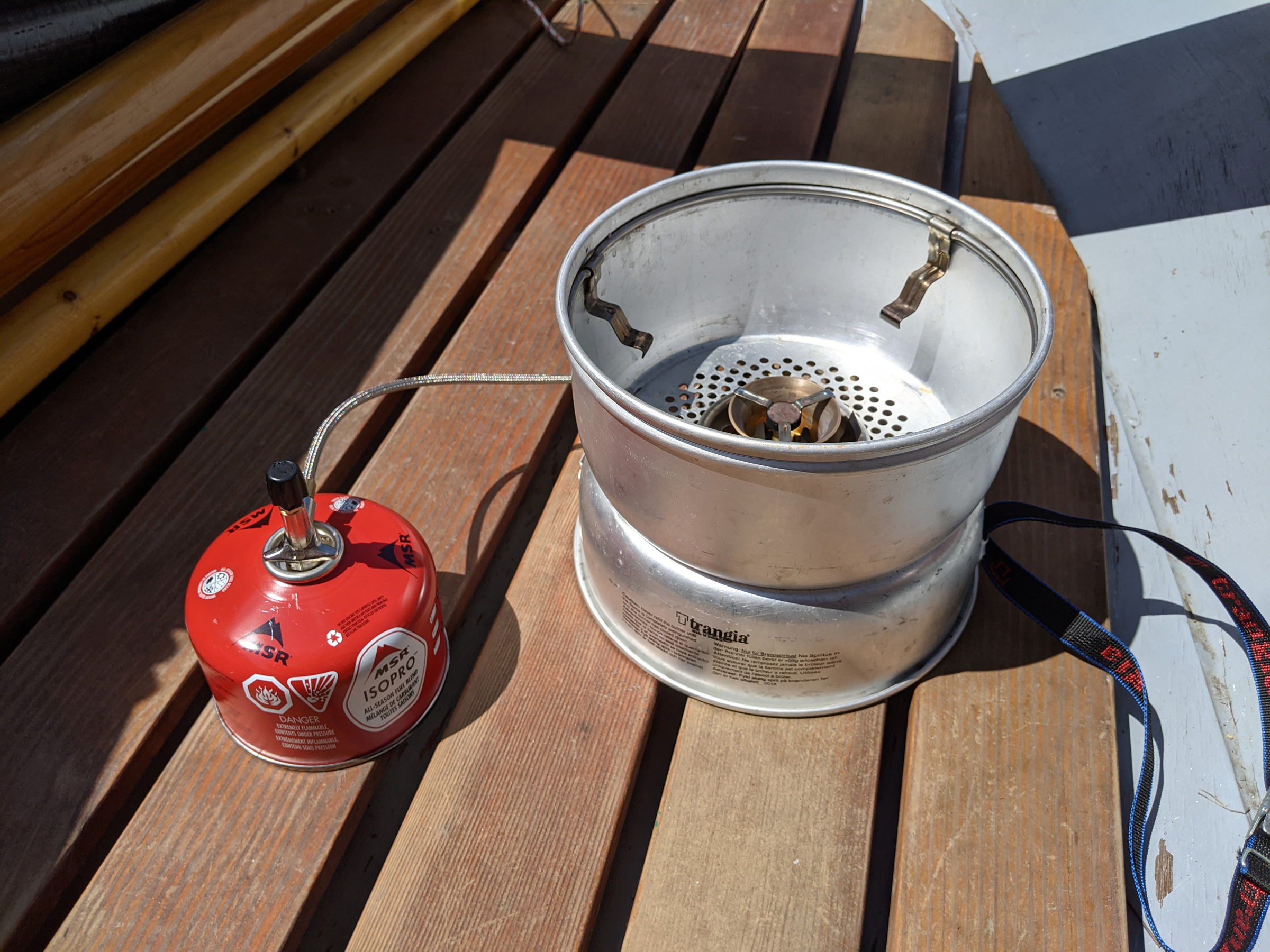
The Trangia system can also operate with canister fuel, shown here, and liquid fuel delivered by a bottle pressurized by hand with a built-in pump.
Using the alcohol burner aboard, however, is strongly discouraged as the open top of the unit is liable to slosh and send burning alcohol into the boat.* When I’m cooking on the boat, I use the Multi-Fuel burner. This burner can be used both for hand-pressurized white-gas fuel tanks or iso-butane cartridges that are readily available at most outfitters. The Multi-Fuel burner clicks into place where the alcohol burner is normally located and it provides a strong, steady heat without the risk of an upset and spilled fuel, but it produces more noise. Also available is the Gas-burner, which is less expensive than the Multi-Fuel burner, and uses only iso-butane cartridges.
The wide range of Trangia accessories increase customization options. I get a lot of use out of my 4.5-liter Billy pot. It is perfect for steaming clams and mussels on the beach and, when not in use, the Trangia fits neatly inside the Billy which is then in turn placed into my 5-gallon galley bucket with plenty of room to spare for the rest of my cooking equipment.
The Trangia stove system, with its wide and stable base, wind resistance, versatility and compactness, is a winning combination for small-boat cruising. It has become one of my most cherished pieces of kit, and has re-kindled the simple joy of cooking while camping.![]()
*See the Comments below for more on the risk of using an alcohol burner in a small boat while afloat. Ed.
Christophe Matson lives in New Hampshire. At a very young age he disobeyed his father and rowed the neighbor’s Dyer Dhow across the Connecticut River to the strange new lands on the other side. Ever since he has been hooked on the idea that a small boat offers the most freedom.
The Trangia Storm Cooker 25-8 UL/HA is listed by Trangia for $112.20 with the spirit burner and $157.90 with the gas burner. Burners are available separately as accessories.
Is there a product that might be useful for boatbuilding, cruising, or shore-side camping that you’d like us to review? Please email your suggestions.
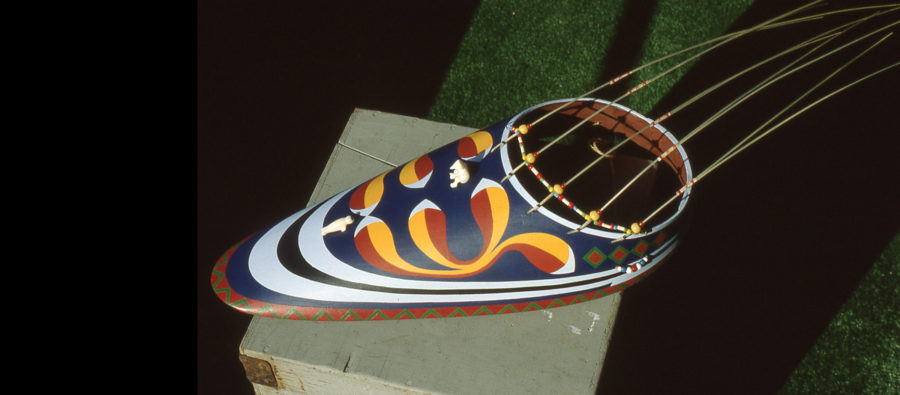
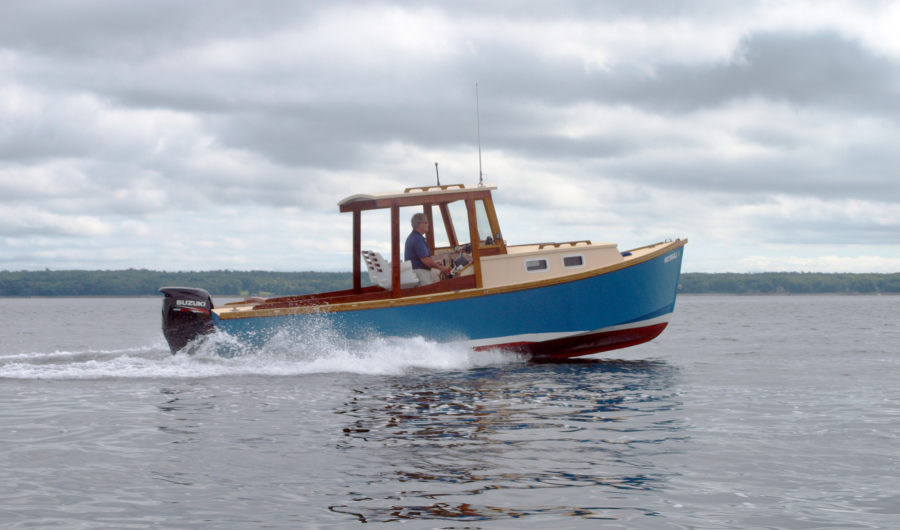
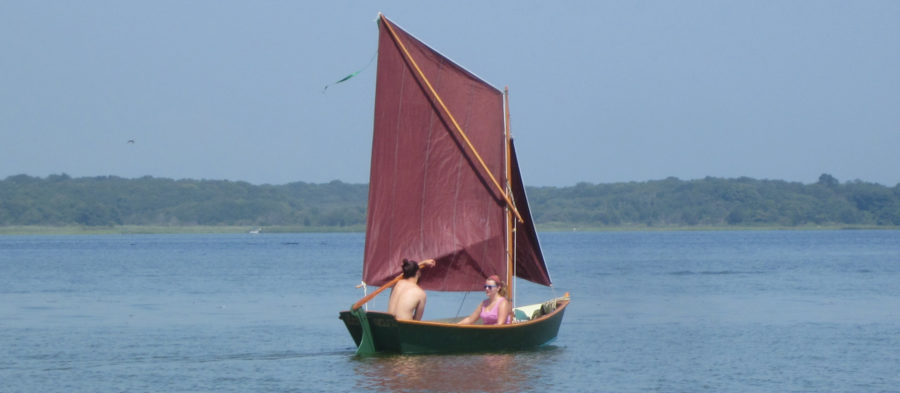
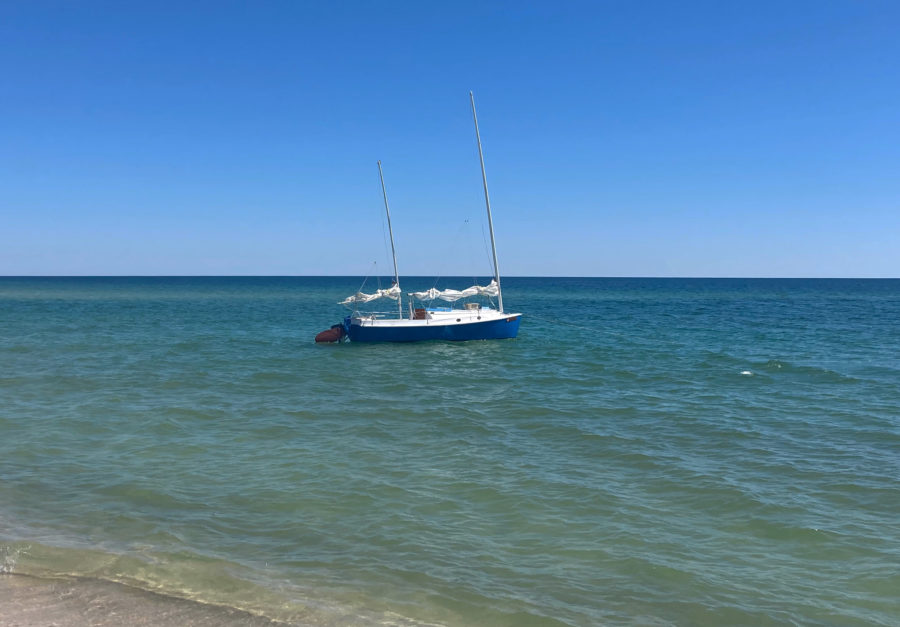
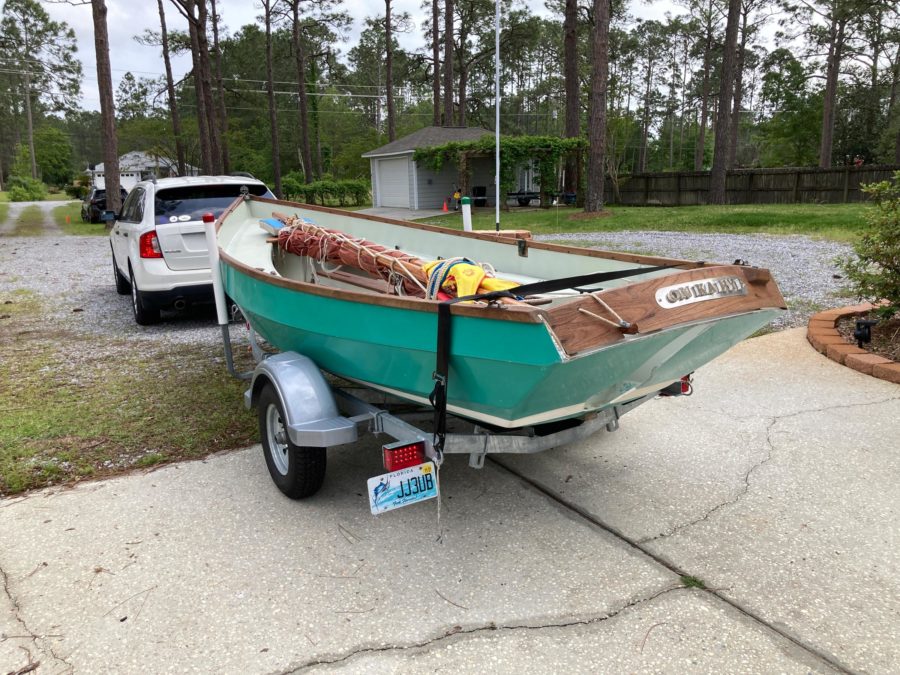
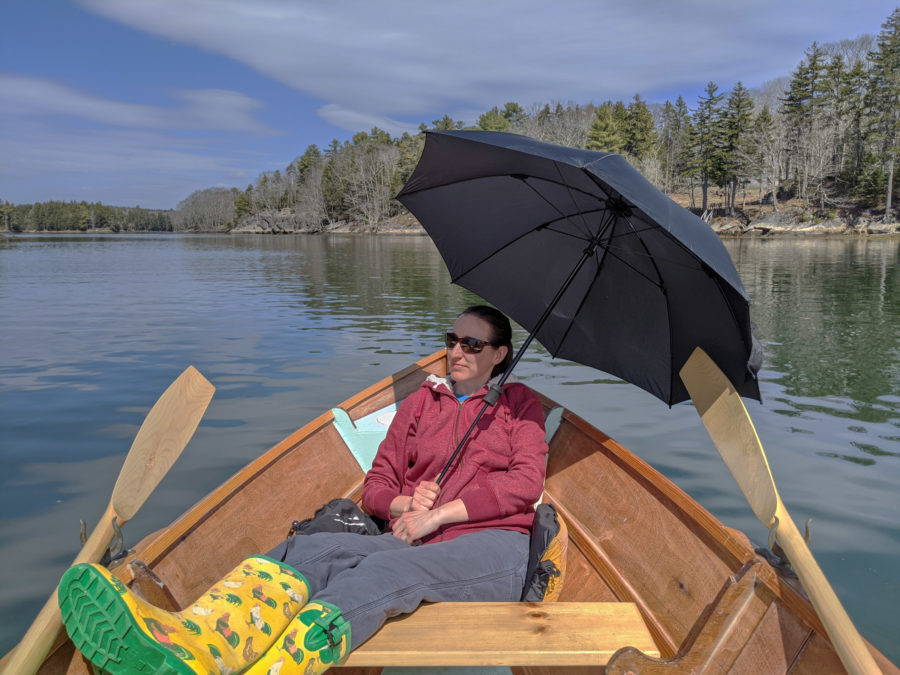
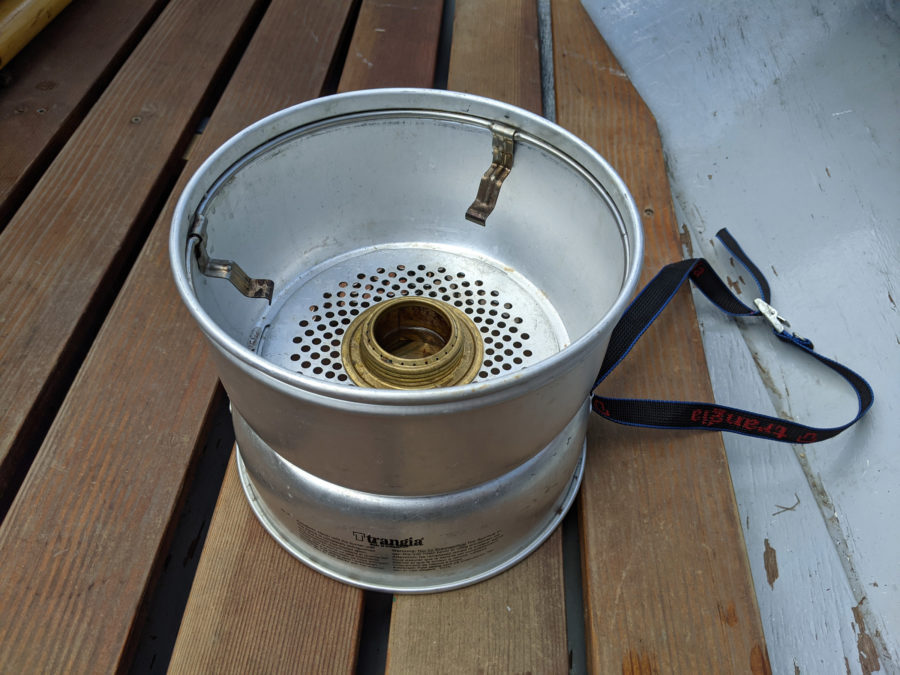
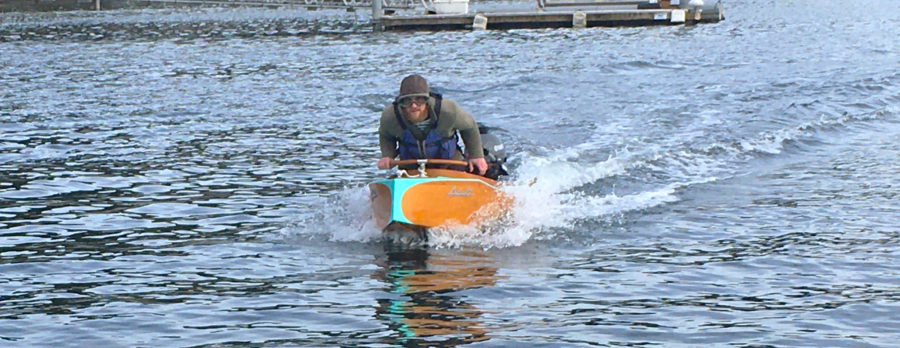
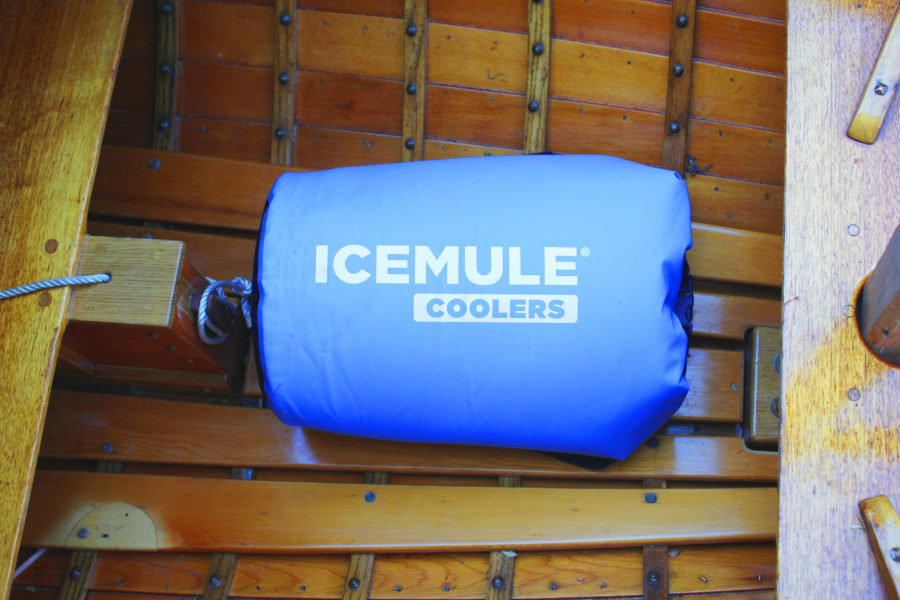
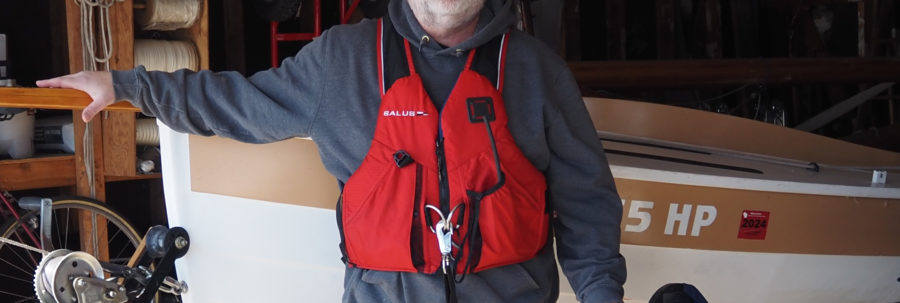
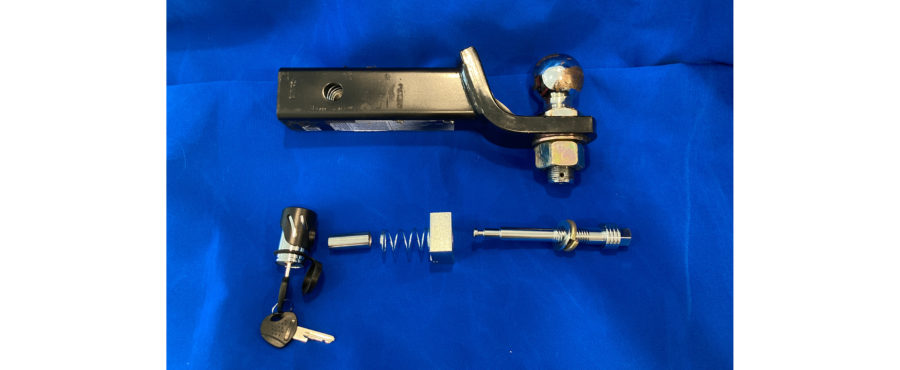
Oh yes, the Trangia is the ideal small boat stove. Its a little heavy for backpacking, but its stability and wind-proof qualities make it perfect for a boat. I use mine with the alcohol burner. The burner does not spill easily.
While the Trangia stove has a wide base and the burner may not spill easily, I know of one case where a Trangia tipped over while being used aboard a small boat. One of our readers was cruising with his wife in a 12’ sailing dinghy equipped with inboard auxiliary power. While making a 5-nautical-mile crossing under power and on flat water, he fired up the Trangia’s alcohol burner to make some tea while his wife took the tiller. When the dinghy was jostled by the wake of a passing powerboat, the stove fell and spread flaming fuel throughout, including under the floorboards. It took him a few moments to retrieve his fire extinguisher and put the fire out with a white cloud of the power and by that time his foot was badly burned and already blistered and peeling.
He was fortunate that he had a B-type extinguisher for burning liquids. (An ABC extinguisher can be used on solid-material (A), liquid (B), and electrical fires (C)).
I think it would be unwise to use aboard a small boat any stove that could spill burning liquid. The liquid itself could spread flames quickly and bilge water under the floorboards would exacerbate the problem.
Christopher Cunningham
Editor
I have used a Trangia for 30 years and found it to be one of the best ways to cook. Very simple in design and therefore extremely reliable. No matter where you go you can buy what we call metho (alcohol). Supermarket, hardware store, petrol station, chemist. No trying to find a camp store hunting for the right gas cylinders. Sure, if the fuel spills it can be a moving fire hazard on a boat however it’s rather odorless, not as explosive as white spirit and smelly as kerosene. However, 2 years ago I was given a Jetboil and found it to be the best and easiest performer of all the stove types. The only drawback is always maintaining a stock of the correct gas cylinders. It boils a mug water in no time (about 2 minutes in extremely cold climates) and comes with a reasonably stable platform. Pot and burner are coupled with a bayonet-type arrangement and can be held by a fold-out handle to eat out of.
Alcohol is the ideal fuel for on board. If you have a spill, it is simple to extinguish the flame by dousing with water.
To see what water would do to an alcohol fire, I poured about ¼ cup in a steel baking pan, set the pan on a concrete driveway, and dropped a lit match in. At first there was no sign of fire, but in a few seconds there were visible yellow flames. Squirting water into the alcohol made the visible flames go away, but I could hear and feel that there was still a fire burning. Switching from a stream of water to a mist made no difference. The alcohol kept burning until it was consumed by the fire.
Christopher Cunningham
Editor
To see what water would do to an alcohol fire, I poured about ¼ cup of denatured alcohol into a steel baking pan, set the pan on a concrete driveway, and dropped a lit match in. At first there was no sign of fire, but in a few seconds there were visible yellow flames. Squirting water into the alcohol made the visible flames go away, but I could hear and feel that there was still a fire burning. Switching from a stream of water to a mist made no difference. The alcohol kept burning until it was consumed by the fire.
Christopher Cunningham
Editor
You should try this experiment at night, you’ll see the flame no problem!
I have a model 27 and I carry it as part of my “kitchen” in my sailing canoe because it allows me to do a simple meal while onboard, sometimes even while underway. I keep mine wedged between my feet if I am using it while under way. In my situation, it is the safest set-up I could find to use. I also carry a one-burner propane stove that I only use ashore when I am trying to heat water for an morning oatmeal breakfast so that I can get an early start to get in six hours on the water before the usual mid-day winds come sweeping down the Sound, which sometimes drive me ashore for the afternoon.
I have never had a problem with using the Trangia on my boats and my fire extinguisher is always within reach. I have had trouble with a fire from the propane stove once while it was being lit on a picnic table and it took the pan of water I was going to heat on the stove to put the fire out on the stove—leaking fitting, or something. Those kind of experiences do get you going in a hurry. I was forbidden from using that stove again on the Ranger’s island.
I don’t have a Trangia, but sometimes use a really old-school Svea. To keep it steady, I cut a hole in a 1/2″ board to match the base. Board is long enough to be shock-corded to a thwart. Get the stove running then set into the hole.
John Hartmann did something similar, but the inverse—cutting a circle of 3/8″-thick ply that matched the inner diameter of his Trangia, and mounting it on a larger piece of wood (possibly the lid of his mess kit box, my memory is fuzzy) to provide an even more stable platform with less possibility of the stove sliding off a thwart or what-have-you.
John also used to operate a Svea, but has now gone full-Trangia. The Svea can offer a bit of excitement when preparing to launch…to put it mildly.
Securing any stove on the boat more than the minimum “placing on a thwart” is a good idea. Additionally I do not entertain any flame while underway in a small open cruising boat. If I might want some hot food during the day, I prepared something that morning and put it in the thermos.
The wide-mouth thermos by Patagonia is a really nice product for this. When I have the stove going I’ll often boil up some water and thermos it for use later that day or to speed things up next time I need to boil water.
Re safety and resistance to spilling, Trangia themselves do a gel burner, but of course you have to find a suitable gel-type fuel.
They also do a gas (propane) burner and a multi-fuel burner but they are more expensive and very expensive respectively.
It is possible to make an alcohol burner more or less spill-proof by packing the fuel reservoir with glass or carbon-fiber felt. However, on a quick search, I have not found one that fits a Trangia. I’m guessing there must be a reason why Trangia have not followed up this safety feature themselves. Why not ask them, SBM?
I used a Trangia 25 on a 5000-mile bike tour a few summers ago. Using it every day for 3 months, I only had one close call with it. I somehow sloshed burning fuel on a picnic table in Idaho. I was able to douse the fire with a liter of water, but it scared the heck out of me. I was very careful after that and since then I have had no issues with alcohol stoves. I don’t think I would use an open burner on a moving boat, though, maybe something like a Jetboil would be safer. I still use my Trangia for car camping but I have been using a ultralight Trail Designs titanium stove with a small mesh burner for backpacking and bike touring.
I use a Trangia 27 on my 12′ Wellsford Scamp cruising dinghy all the time in all sea conditions. I have built a simple gimbal arrangement that lets the complete stove gimbal on the fore and aft centerline of the boat. I use it sensibly and have never had any issues. Also, remember that if the fuel does spill, it will be in a very thin film on any surface, not concentrated as in the burner or in a dish so not a valid comparison.
Water added to alcohol dilutes the calorific value hence reduces its potency and in a thin film it is more easily extinguished by throwing a cloth over it.
Happy sailing and cooking afloat
Regards,
Julian
I’ve used the 27 Trangia for my bicycle touring, as well as a bit of motorcycle touring since 2009. It is wonderful.
I mostly heat up water and cook things like eggs so I don’t need more than the relatively short burn time the stove provides. While other stoves can sound like a jet taking off, the Trangia is silent. I strongly value that silence, especially on quiet mornings. The fuel is inexpensive and one can substitute the yellow bottles of Heet, at the loss of some caloric value. Heet can be found in just about any auto parts store, or a place like Walmart.
It may be worth a mention that Trangia makes an accessory lid for the burner which is designed to throttle the flame down. It’s secondary feature is that it provides a lip which makes it very difficult to spill any contents, seeing how that has become a concern.
The use of any stove can be dangerous if you think about the worst that can happen. Pressurized stoves can flare up. Alcohol stoves don’t. Without kindling, the flame does not burn long enough to light a wooden surface with a splash of alcohol. Perhaps spilling it on canvas or a sleeping bag would be a more real danger?
Of course, were I actually so eager to avoid any and all danger – I’d stay off the water.
Regarding stove safety: Several of us were on a kayak trip at Esperanza Inlet, west coast of Vancouver Island. One guy was cooking his dinner on a borrowed butane backpacking stove, the kind that forms a vertical stack of fuel, stove, and cook pot–the Jetboil is an example of this type. When he reached over to adjust something, he knocked the whole shebang over, and burned his hand on the red-hot ignition sparker trying to grab it. Being a tough guy, he never complained about the injury, so of course we stopped worrying about him after a bit.
This confirmed me in my determination to use butane stoves only when the fuel connects to the stove via an armored hose; and I want the stove itself to have the stability of 3 or 4 wide-spaced feet. The most extensive selection of these seems to be on Ebay, and of course almost all are Chinese made.
No stove setup is perfect. The biggest problem with these stoves is the non-recyclable cartridges. And then you have this dilemma: When the canister is down to 1/4 full, it doesn’t seem worth packing, especially if you are volume-constrained as in a kayak. So these things start piling up in your camping stash until it becomes like Fibber McGee and Molly’s closet (I date back to radio days, folks–ask your grandparents to explain this allusion). I did find a device that is supposed to let you connect 2 canisters (one upside down) in order to drain one into another, and thus consolidate them, but it didn’t seem to work very well. Seems you need to chill the bottom canister and heat up the top one to force the fuel to flow. I’d love to see someone address this problem.